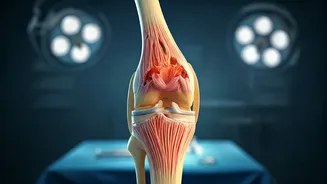Poor Warm-Up Habits
Skipping a warm-up before hitting the weights is a recipe for disaster. Before engaging in strenuous activities, your body needs adequate preparation.
A proper warm-up increases blood flow to the muscles and elevates the body temperature, thereby improving the elasticity and flexibility of muscles and joints. Many individuals rush into their workouts without taking the time for preparatory exercises, such as dynamic stretching or light cardio, thus making themselves more susceptible to injuries. This can lead to tears, sprains, and other joint problems. Ensure your body is ready for exercise to protect it from potential harm by spending some time stretching and warming up before each session. Ignoring this basic step will make the exercise much more dangerous.
Incorrect Form Techniques
Incorrect form is a major cause of gym-related injuries. Even with a good warm-up, the technique is the most important component of safe workouts. Performing exercises with poor technique can place excessive stress on joints, increasing the chances of injury. It can involve several things, like improper posture, incorrect alignment, or using momentum instead of muscle power. A common example is not maintaining a straight back while deadlifting or squatting, which can place extreme pressure on the spine and knees. Additionally, bending the wrists during a bench press can lead to wrist injuries. People often sacrifice form for the sake of lifting heavier weights, which is a dangerous practice. Prioritize the quality of your movement and technique over the amount of weight lifted to protect your joints.
Lifting Excessive Weights
Lifting weights that are too heavy for your body is a fast track to joint injuries. Many gym-goers feel pressured to lift more weight to make progress and often overestimate their physical capacity. Overloading your joints with more weight than they can handle causes excessive stress on the muscles, ligaments, and tendons, thus increasing the probability of strains, sprains, and other injuries. This is especially true for exercises that involve a lot of weight, such as squats, deadlifts, and bench presses. Lifting weights that are too heavy can compromise form and lead to poor technique, compounding the risk. It is important to begin with weights you can easily manage, gradually increasing the load as your strength improves. Listen to your body and recognize your limits.
Neglecting Muscle Imbalances
Muscle imbalances occur when some muscle groups are significantly stronger or more developed than others. Failing to address such imbalances can lead to joint problems and injuries. For instance, strong chest muscles and weaker back muscles may pull the shoulders forward, increasing the likelihood of shoulder pain. Similarly, strong quads and weak hamstrings may lead to knee problems. It's crucial to focus on a balanced workout routine that targets all major muscle groups and addresses any existing imbalances. This can be achieved by incorporating exercises that target both the agonist and antagonist muscles, which also improves posture and reduces the chance of injuries. Consult a trainer to assess your muscle balance and create a tailored exercise plan.
Overtraining and Overuse
Overtraining is another contributor to joint problems. Pushing your body too hard without sufficient rest can lead to injuries. This involves exercising too frequently, for too long, or at too high of an intensity. When you overtrain, your muscles and joints don't have enough time to recover and repair. This can lead to fatigue, reduced performance, and increased risk of injury. Overtraining can often cause overuse injuries, such as tendinitis and stress fractures. To avoid overtraining, it is important to incorporate rest days into your workout schedule and listen to your body. Watch out for signals such as persistent pain, fatigue, and decreased performance. Adjust your workout plan or consult a professional if you experience these signs.
Ignoring Pain Signals
One of the most dangerous mistakes is ignoring pain during workouts. Pain is the body's warning signal that something is wrong. Continuing to exercise when you feel pain can worsen the injury. Many individuals often push through pain to achieve their fitness goals, but this can lead to serious joint injuries and long-term complications. Ignoring pain can lead to increased stress on joints, muscles, and ligaments, making the injury more severe. If you experience pain during exercise, stop immediately and rest. If the pain persists, seek advice from a medical professional. Never try to ignore pain or continue working out when injured. The goal is to avoid the problem completely.
Improper Exercise Selection
Choosing the wrong exercises can also put your joints at risk. Selecting exercises that are not suitable for your body type, fitness level, or existing conditions can lead to injury. For example, individuals with pre-existing knee problems should avoid exercises that place excessive stress on the knees, such as deep squats or plyometrics. Similarly, choosing exercises that place excessive pressure on other joints without appropriate strengthening can be harmful. Focus on exercises that strengthen the muscles around the joints, improve flexibility, and enhance stability. Seek the help of a certified personal trainer to design a program that suits your body's needs and goals.
Insufficient Recovery Practices
Recovery is an integral part of any fitness program, and neglecting it can lead to joint problems. When the body is subjected to exercise, the muscle fibers undergo damage and micro-tears, and the joints undergo stress. This is where recovery practices come into play. It includes sufficient rest, proper nutrition, and effective stress-reducing techniques. Without proper recovery, your body cannot repair itself properly, increasing the chances of overtraining, muscle strains, and joint injuries. Ensure you get enough sleep, consume a balanced diet, and include activities such as stretching, foam rolling, and mobility work in your routine. Ignoring these practices can lead to long-term health issues and joint problems. Make recovery a priority to ensure your fitness journey is safe and sustainable.












